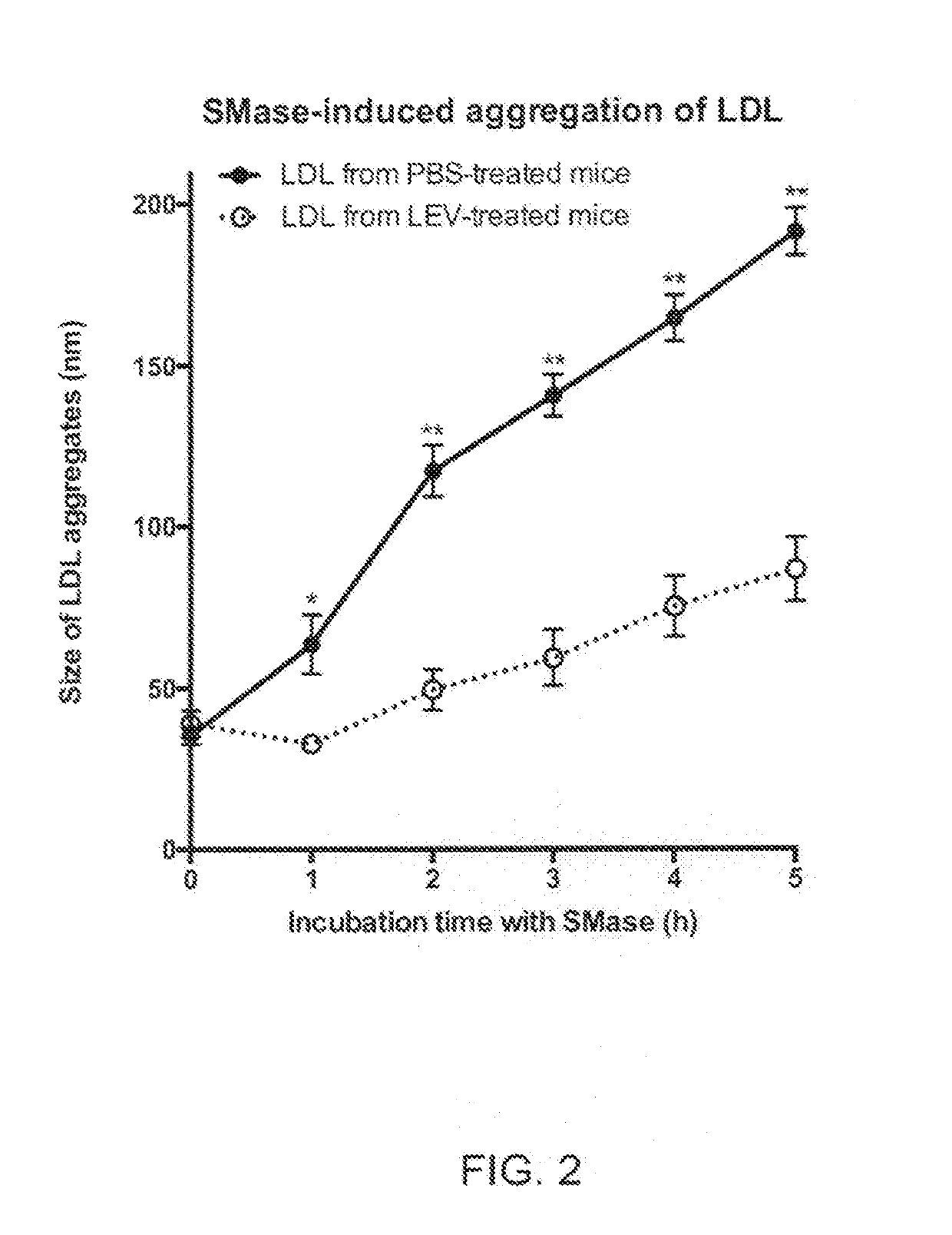Methods and Kits for Reducing the Susceptibility of Lipoprotein Particles to Atherogenic Aggregation Induced by Arterial-Wall Enzymes
a technology of arterial wall enzymes and kits, which is applied in the direction of drug compositions, peptide/protein ingredients, cardiovascular disorders, etc., can solve the problems of less efficient at altering ldl and other atherogenic lipoproteins, less susceptible to aggregation, and considerable residual risk of ascvd events
- Summary
- Abstract
- Description
- Claims
- Application Information
AI Technical Summary
Benefits of technology
Problems solved by technology
Method used
Image
Examples
example 1
LDL Particles from LEV-Treated Hypercholesterolemic Mice are Far Less Susceptible to SMase-Mediated Aggregation than are LDL Particles from PBS-Treated Hypercholesterolemic Mice
[0125]This example is designed to show, in an in-vitro (test-tube) assay, that LDL from LEV-treated mice is far more resistant to SMase-mediated aggregation than is LDL from control (saline-treated) mice. The assay of the susceptibility of LDL to aggregation was performed according to prior literature (9, 10, 16). The example is important because SMase-mediated LDL aggregation is expected to be a major contributor to atherosclerotic plaques associated with cardiovascular disease.
Production of LEVs
[0126]The procedure used to make the LEVs from POPC in this Example was the following: procedures were performed in a sterile biological cabinet, under purified atmosphere (e.g., HEPA-filtered air), with all surfaces and equipment cleaned and sterilized. Synthetic, pure, dry, granular POPC from Avanti Polar Lipids, I...
example 2
Effect of LEV Treatment on the Composition of LDL
[0132]The 16 LDL samples from Example 1 were also subjected to compositional analyses. Lipids were extracted by the Folch procedure, under nitrogen, in the presence of lipid anti-oxidants, and then subjected to an automated, high-throughput tandem mass spectrometry procedure that was previously described in detail (15).
[0133]The results are shown in FIG. 4. In FIG. 4, the asterisks indicate that there was a statistically significant difference between the results obtained with mice injected with LEVs and mice injected with PBS. The treatment of mice with a single injection of LEVs resulted in a decrease in the molar ratio of sphingomyelin to phosphatidylcholine (SM:PC) in the LDL of the mice.
[0134]There was a statistically significant increase in the overall PC:protein ratio, and there were statistically significant decreases in the UC:PC, UC:protein, and the overall lysoPC:PC ratios in the LDL samples from mice injected with LEVs com...
PUM
| Property | Measurement | Unit |
|---|---|---|
| Fraction | aaaaa | aaaaa |
Abstract
Description
Claims
Application Information
 Login to View More
Login to View More - R&D
- Intellectual Property
- Life Sciences
- Materials
- Tech Scout
- Unparalleled Data Quality
- Higher Quality Content
- 60% Fewer Hallucinations
Browse by: Latest US Patents, China's latest patents, Technical Efficacy Thesaurus, Application Domain, Technology Topic, Popular Technical Reports.
© 2025 PatSnap. All rights reserved.Legal|Privacy policy|Modern Slavery Act Transparency Statement|Sitemap|About US| Contact US: help@patsnap.com



